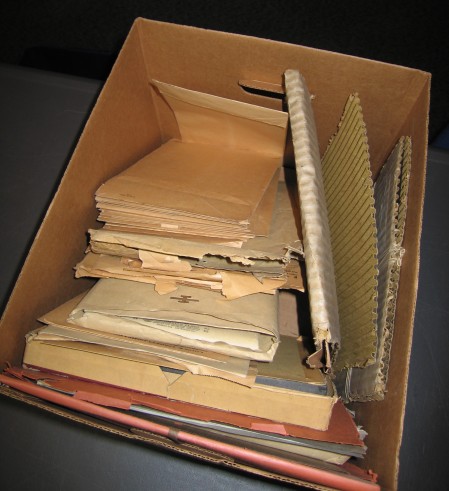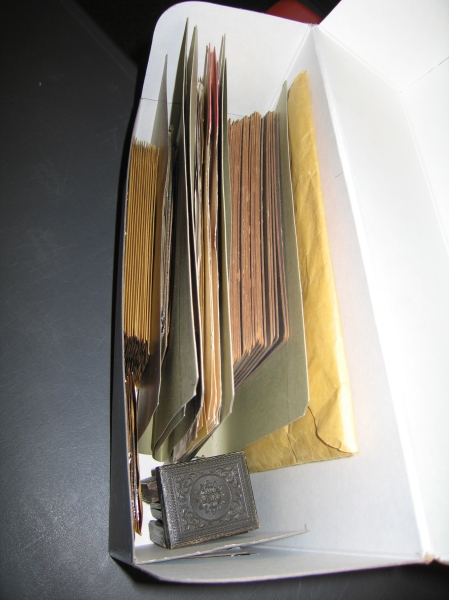By Jim DaMico
Graphics Project Archivist
April 21, 2011
Picking up from the last post here, I have finished processing the [Washburn-Fessenden-Wood-Abbott-Woods Family – Photographs]. From start to finish, the survey, arrangement and description, tabulation, weeding and re-housing took approximately 17 days.
Today, a researcher came in and is now using this collection. The time and effort has certainly paid off. If this researcher came in two months ago there would be nothing to look at. Now there is draft finding aid that includes a box and folder list giving the researcher a basic jumping off point.
Initially, my impression of the collection was that it has negligible research value as most of the views and some of the people are unidentified and that this collection is yet another example of the aristocratic class, their fashion and leisure time in the United States and abroad. Some of the families represented here lived in Italy, and visited Europe just as many in the upper class had done during the time period of circa 1900-1930.
In addition, the overwhelming number of copy photographs and copy negatives of paintings, daguerreotypes and sometimes ephemera made by one of the family members’ appear to have little to no value other than documenting an obsession to make multiple copies of the same image over and over again.
In this collection I did discover two examples of the Hess-Ives Corporation HICHROGRAPHY color photographic process. The Hichrome is are an early color photographic process that was invented by Frederick E. Ives around 1910. The images that are in this collection are dated 1917 and 1918 and appear to be copy photographs of a painting and some china. The Hichromes are in presentation folders with the Hess-Ives Corporation logo and list of patents.
Here are some examples of what the collection looked like before processing:
In the above image, notice the corrugated board. This was how the glass plate negatives were originally housed. All of the glass plate negatives were re-housed using acid free four flap enclosures.
The next photo shows the beginning of the sort process that I went through with the material. This step allowed me to start to differentiate between the original photographs and the copy photographs.
These last images are the “after” pictures and show the result of a fully processed collection:
To find out more about this collection and others, please contact the RIHS Reference Services.









 Posted by 2010rihsgraphics
Posted by 2010rihsgraphics